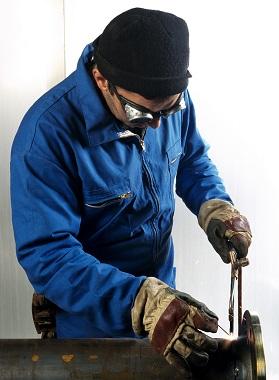Using AI to control energy for indoor agriculture
30 September 2024
Published online 28 April 2013

The grating sounds of drilling seem ceaseless on the many high-rise construction sites north of Doha. And despite imposing signs warning that boots, helmets and high-visibility jackets are compulsory, there is a glaring lack of safety gear on sites.
Staff at Hamad Medical Corporation, Qatar's primary healthcare centre, has reported a significant increase in the number of occupational injuries in the last four years. Falls at construction sites are second only to road accidents as a cause of injuries in Qatar1.
Sharan Burrow, the International Trade Union Confederation's (ITUC) general secretary highlighted the disparity between Qatari safety standards and those in other countries. "The fatality rate [in Qatar] is around eight times as high as, for example, it is for the construction industry in the UK," she says. "More than 1,000 workers were killed or injured in falls on construction sites in Qatar last year, an increase of two-thirds compared to 2008,"
Furthermore, Burrow claims that a full picture is hard to determine as "it is not possible to get accurate statistics from Qatari authorities" and unions have to rely on academic institutions, NGOs and credible media reports.
"Qatar's level of workplace safety is appalling compared with other rich countries," she adds. "Around 200 Nepalese migrant workers die each year in Qatar, and a similar number of Indian migrants. Some of these are recorded as work accidents, but many are simply recorded as 'heart attacks.'"
As autopsies are frequently overlooked, Burrow claims that many deaths attributed to heart attacks are in fact fatalities caused by unsafe working conditions and inadequate living conditions in the labour camps used to accommodate migrant workers.
At Hamad Emergency Department, Asmaa Hameed spends much of her working time treating Nepali and Sri Lankan construction workers.
"Most of these workers are really young, maybe as young as 20, and they usually don't have a health card when they come in for treatment," Hameed says. "Every day I see a lot of fractures due to falls from heights, severe cuts and bruises and amputation of limbs."
Around 200 Nepalese migrant workers die each year in Qatar, and a similar number of Indian migrants.
Hameed is dubious about the quality of safety training provided by the workers' sponsors as most of her patients are unaware of their rights.
"These patients suffer from severe injuries and are entitled to sick leave for a minimum of two weeks or more depending on the injury, but I doubt they are aware, as no one asks for it," she says.
At the moment, there is no established process for workers to complain about health and safety issues as trade unions or committees for foreign workers are forbidden in Qatar. In May 2004, the Qatari government passed a law that only allows Qatari workers to strike, form committees, and join international labour organizations, pending ministerial approval. This leaves the 1.2 million foreign workers, mainly from the Indian subcontinent, without a voice.
In December 2012, ITUC staged a rare protest in Doha to demand the formation of trade unions to represent worker rights. "Qatar needs to set up independent bodies to monitor work sites and prosecute the employers who are breaking the law. Without these, it's a very dangerous situation for the workers," says Nicholas McGeehan, the Gulf researcher at Human Rights Watch.
In April, ITUC wrote to FIFA, the world football governing body, calling for it to rerun the vote for the 2022 World Cup and establish construction workers' rights as a criterion for any future bid.
"FIFA should not accept that the World Cup facilities will be built using modern slavery, nor should they allow a situation where more workers will die building the World Cup infrastructure than players will play in the World Cup finals," Burrow argued.
The Qatari government is responding to these calls and the growing international criticism, albeit slowly. In February, the State Cabinet reviewed a new set of safety regulations for construction workers and aims to implement stringent laws against the abuse of workers2. Last week, the Supreme Committee also announced a worker's charter that will help regulate World Cup-related projects3.
However, McGeehan is not satisfied. "The worker's charter is only a set of hopes and aspirations. We need a roadmap on how it's being implemented," he says. "We asked the Supreme Committee for labour standards in the contracts, and the committee is still considering it. We are hopeful that we will see some action soon."
doi:10.1038/nmiddleeast.2013.62
Stay connected: